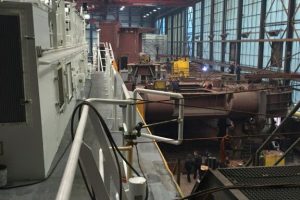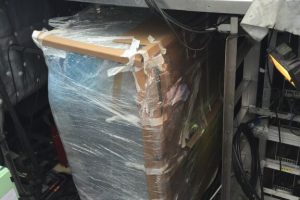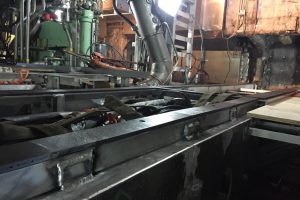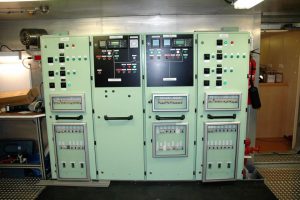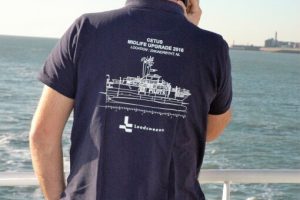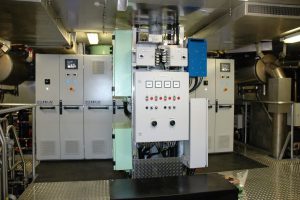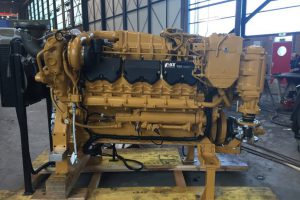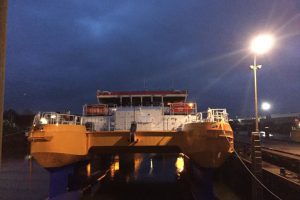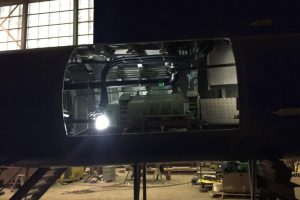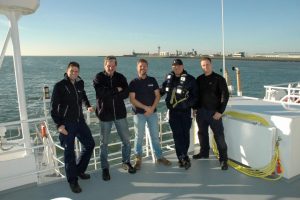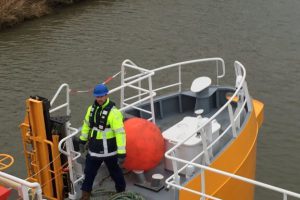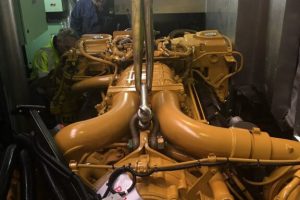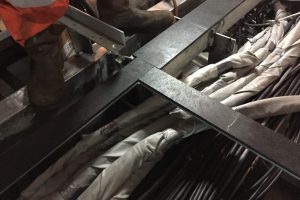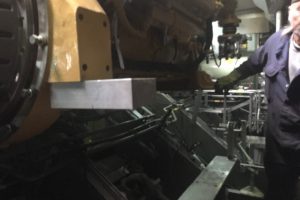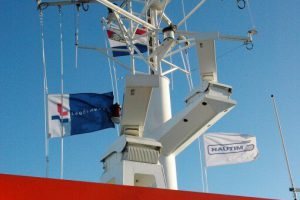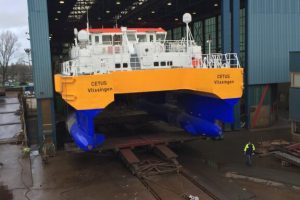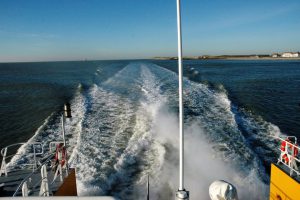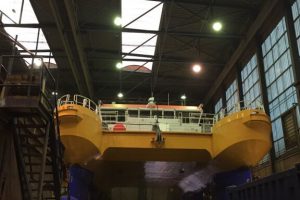Nautim has concluded its work on the midlife upgrade of the Cetus; the twin-hulled swath pilot vessel operated by the Dutch Maritime Pilot’s Association, Loodswezen. This major project involved the replacement and repositioning of several of the ship’s systems. Nautim’s role in the midlife upgrade was engineering and project management; both carried out in close cooperation with Loodswezen.
One of the principle elements of the midlife upgrade was to improve the Cetus’ power supply and propulsion systems. This called for the installation of new, more powerful main engines, custom-made generator, frequency drive propulsion switchboard, gearboxes, propulsion shaft, electric motors and propellers.
Word from the captain
From a ‘hands-on’ operational point of view, one of the Cetus’ captains, Peter Willeboordse, is in a good position to talk about the renewed propulsion system: “Before the upgrade the response time between the throttle and the ship’s reaction was too slow. What’s more, we could only reach 16.5 knots. Now the response time is almost direct and the Cetus has a top speed of 20.5 knots.”
The comprehensive scope of work of the 2005-built vessel also included refurbishment of the interior accommodation for the pilots to and from their place of work. Furthermore, the Cetus is now equipped with new electrical and cooling water systems and a new ship’s alarm system.
In the candy shop
For Loodswezen Electrical Engineer Damien van Benthem, the upgrade has resulted in an increase in reliability as well as power: “The two new, more powerful engines and frequency controlled generators supply power for the 400/230V ship’s network in addition to providing more than enough power for the propulsion. What’s more, almost every system is redundant: giving a high priority to safety during pilot boarding and transit operations.” The radar and navigation systems, with their own UPS network from the new lightweight lithium ion batteries, demonstrate this redundancy well. “With all the newly engineered electrical systems, the Cetus is more reliable than ever. More redundancy and more power – for an engineer, it’s like being in a candy shop!”
Future proof
“Optimising future service and maintenance played a big part of this project – for example, installing standardised components that are used on other vessels in Loodswezen’s fleet,” comments Nautim Director Vincent de Jong. “This was also the reason behind including key members of the client team – Chief Engineer and electrical specialist, for instance – in the overall project team.”
Weight reduction was another important aspect of the midlife upgrade. This was accomplished by replacing certain components with lighter alternatives, in addition to removing other apparatus that were not crucial to the operation of the vessel. “Ship equipment technology has advanced a lot over the last ten years – something that the Cetus could really benefit from,” Mr De Jong continues. “By replacing the existing lead batteries with more advanced lithium ion cells, we gained weight savings of between 40 and 50 percent. We also saved a significant amount of weight with a new FiFi installation.”
Seakeeping gains
Reductions in the overall weight of the Cetus were also linked to solutions regarding the distribution of the existing weight. This was facilitated by renewed stability calculations performed by the Nautim team. Focusing on vessel stability, improvements to the vessel trim were made by smart positioning of the heavier components. “The vessel stabilisers have also been upgraded – getting their vessel movement information from sensors, and speed data from GPS,” adds Loodswezen Chief Engineer Chris Franke. “The upgraded Cetus is not only faster and more responsive, but also more stable.”

